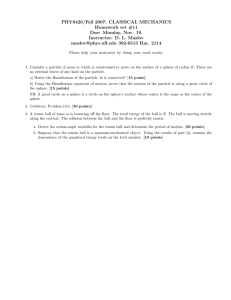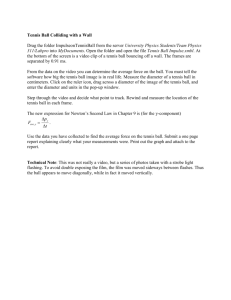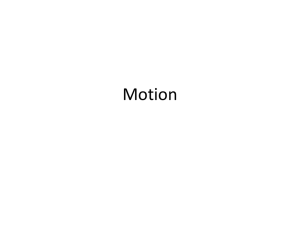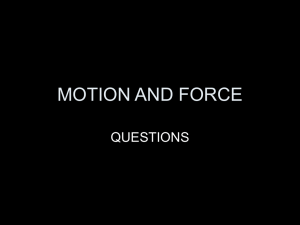Tennis Example
advertisement
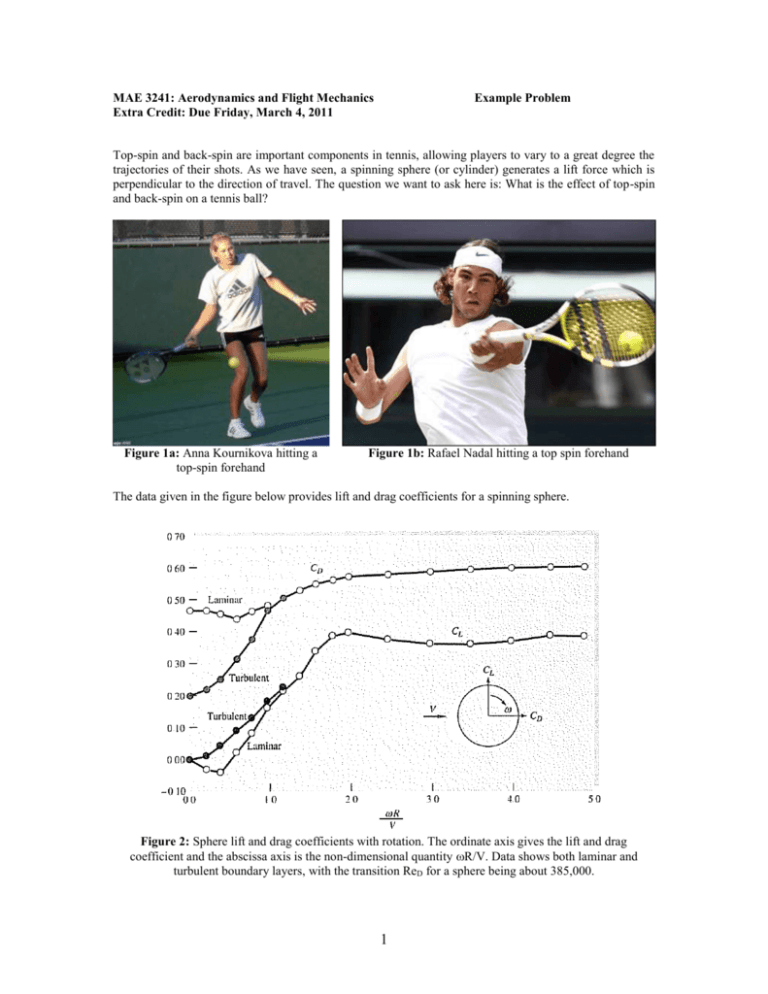
MAE 3241: Aerodynamics and Flight Mechanics Extra Credit: Due Friday, March 4, 2011 Example Problem Top-spin and back-spin are important components in tennis, allowing players to vary to a great degree the trajectories of their shots. As we have seen, a spinning sphere (or cylinder) generates a lift force which is perpendicular to the direction of travel. The question we want to ask here is: What is the effect of top-spin and back-spin on a tennis ball? Figure 1a: Anna Kournikova hitting a top-spin forehand Figure 1b: Rafael Nadal hitting a top spin forehand The data given in the figure below provides lift and drag coefficients for a spinning sphere. Figure 2: Sphere lift and drag coefficients with rotation. The ordinate axis gives the lift and drag coefficient and the abscissa axis is the non-dimensional quantity R/V. Data shows both laminar and turbulent boundary layers, with the transition ReD for a sphere being about 385,000. 1 Using this data, and assuming that a tennis ball (mass = 57 grams, diameter = 6.35 cm) is struck at sea-level with an initial velocity V0=30m/s with a rate of rotation of 7200 RPM. Also take the height above the playing surface at which the ball is struck to be 1.5 meters. What is the effect of a forward rate of rotation (top-spin) and a backward rate of rotation (back-spin) on this tennis ball relative to the ball being hit without spin? Some preliminary steps: 1. Since we are dealing with real data and real viscous effects in this problem, the first step is to always calculate the Reynolds number. This will give us information on the type of boundary layer we have, either laminar or turbulent. The Reynolds number for a sphere is based on its diameter and is given by: Re D VD 1 The Reynolds number for transition is approximately 385,000 for a sphere. 2. 3. For this short distance, we can assume that the ball travels in nearly a circular arc. A real trajectory would be parabolic, but for this short distance and initial speed, a circular arc will give quite accurate results. Using the identified lift and drag coefficients, we can find the total force on the tennis ball. As a reminder, recall that the lift and drag are related to the lift and drag coefficients as follows: 1 V 2 Sc L 2 1 D V 2 Sc D 2 L 2.a 2.b In Equations 2.a and 2.b, S is the frontal area of the geometric body. For a sphere this would simply be (/4)D2. Note: If you don’t recall Equations 2.a and 2.b, review Section 1.5 of Anderson. We will be using these expressions often when studying airfoils and wings. 4. 5. Estimate the initial acceleration of the tennis ball in the horizontal and vertical directions. This can be done using a simple F=ma approach. Once the initial accelerations are known, an average velocity of the ball can be found and the time that it takes to strike the court can be found. Using the centripetal acceleration and the equation, ay 2 Vavg 3 R you can find the radius of the circular arc that the tennis ball is traveling on, which is the radius of curvature. Finally using this value, it is easy to estimate the distance that the tennis ball travels. 2

